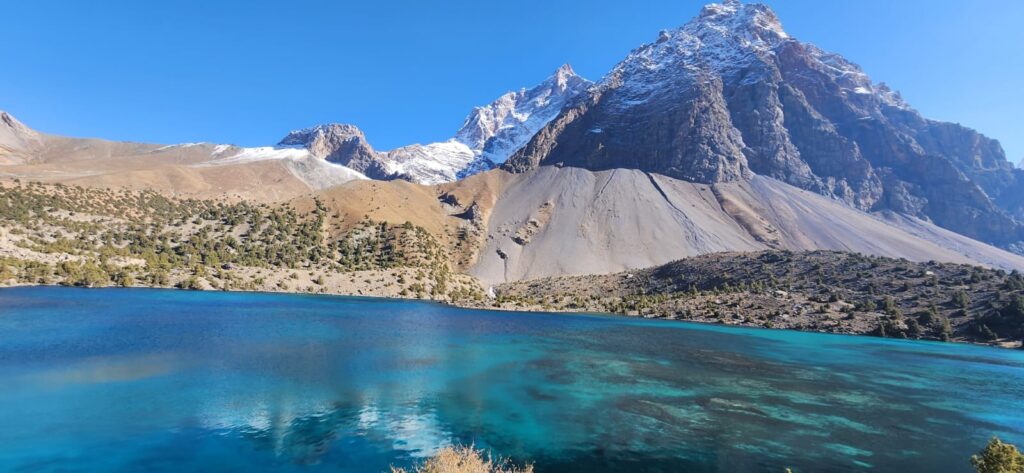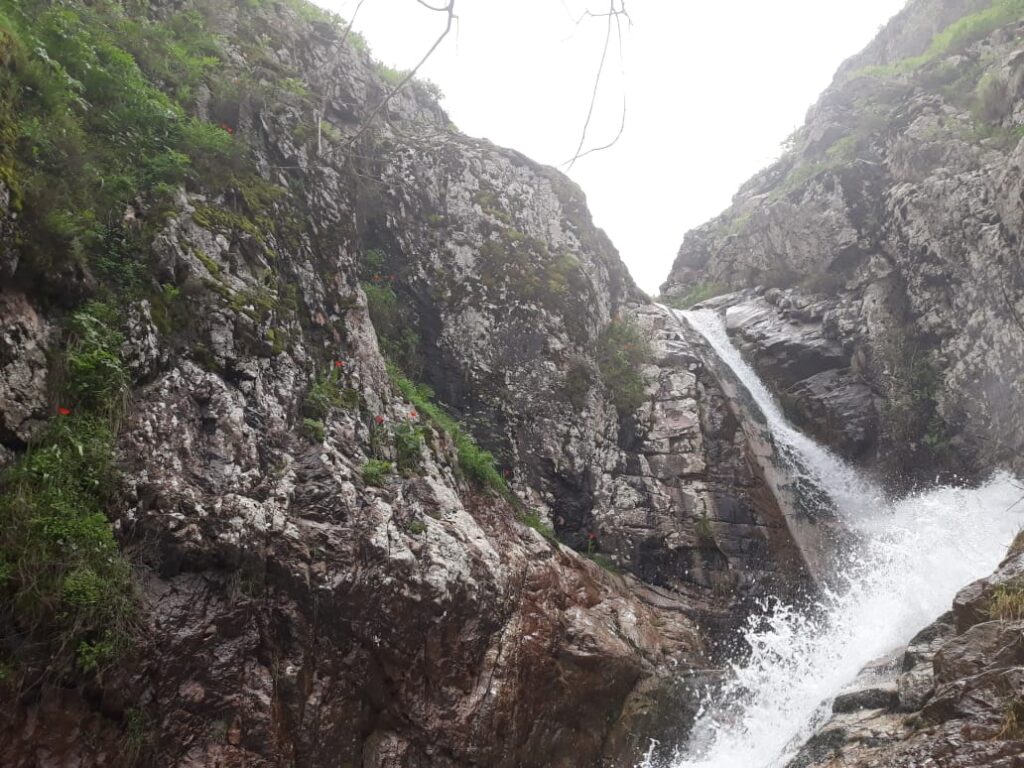On the lower reaches of Tajikistan’s rivers, as spring runoff gives way to summer flows, fishermen gather at dawn along the banks with nets, handlines, and aging wooden boats. Their activity is both timeless and newly fragile. Riverine fisheries, which once was an abundant, integral part of local livelihoods and riparian ecosystems have been steadily declining for decades. Changing river regimes, irrigation withdrawals, pollution, and habitat fragmentation have reshaped the geography of fish habitats, forcing communities to adapt to rivers that no longer behave or provide as they once did. These are stories of landscapes in flux, where ecological changes and human adjustments are tightly intertwined.
Tajikistan’s rivers originate in the high Pamirs and Tien Shan, fed by snowmelt and glaciers. As they descend through deep valleys to the lowlands, they support a range of aquatic habitats: fast-flowing mountain streams, gravel-bed middle reaches, and broad meandering sections with oxbow lakes and wetlands. Historically, these riverine systems supported diverse fish communities adapted to different flow regimes and temperature gradients. The Amu Darya basin, into which most Tajik rivers eventually drain, was home to several native carp species, pike, catfish, and sturgeon migrating upstream from the Aral Sea basin (Pavlovskaya, 1964). Seasonal floods maintained side channels and wetlands where fish spawned and juveniles found shelter.
Fisheries once followed the rhythms of rivers: snowmelt pulses brought nutrients and fish migrations; floodplains swelled into productive nurseries; and communities timed their harvests to the seasonal hydrology. Geography itself structured these livelihoods.
The transformation began in earnest with large-scale irrigation development during the Soviet period. Massive canal systems diverted water from major rivers, especially the Vakhsh, Kafirnigan, and Syr Darya, into cotton fields. These diversions flattened seasonal flood peaks and reduced overall discharge downstream. Side channels silted up, wetlands shrank, and formerly connected floodplain lakes became isolated. By the 1980s, many lowland sections of rivers were heavily regulated, their flow regimes altered to meet agricultural demands rather than ecological cycles (Glazovsky, 1995). Fish populations adapted to dynamic hydrological conditions found themselves in simplified, fragmented habitats.
Hydrological change coincided with other pressures. Pollution from agrochemicals accumulated in return flows, degrading water quality. Industrial effluents from aluminum production near Tursunzoda added heavy metals to river systems (Murray-Rust et al., 2003). Overfishing, often unregulated after the collapse of Soviet collective management structures, further reduced populations. Many communities continued traditional fishing practices out of necessity, even as catches declined. A former fisheries manager in Khatlon recalled, “In the 1970s, you could fill a boat in an evening. By the late 1990s, even a few kilos was a good day.”
Dams and weirs introduced new disruptions. While Tajikistan’s largest hydropower plants are upstream (such as Nurek), smaller diversion dams and weirs dot the middle reaches of rivers, often lacking fish passages. These structures fragment habitats and block migrations of species that once moved freely between different reaches to spawn or overwinter (Petr, 1992). In some tributaries, entire stretches have become disconnected from main channels during low-flow periods, trapping fish in shrinking pools. Species adapted to mobility now face geographic compartmentalization imposed by human engineering.
Habitat fragmentation along rivers creates ecological archipelagos: small, isolated pockets of fish populations separated by barriers of dry channels or impassable structures. Once continuous river corridors become broken threads, fraying ecological connectivity.
Communities along rivers have responded in uneven ways. Some have shifted toward small-scale aquaculture, digging ponds adjacent to rivers to raise carp and other species. Others travel further afield, fishing in reservoirs or upstream reaches where populations are still more robust. A few have turned to seasonal wage labor, leaving fisheries as a secondary livelihood. These adaptations reveal both resilience and constraint. They depend on access to land for ponds, equipment for travel, or alternative income sources- options not evenly distributed across rural populations.
Ecological adaptation is happening too, albeit less visibly. Certain fish species such as those tolerant of warmer, slower, and more polluted water have become more dominant in altered rivers. Opportunistic species such as common carp and some cyprinids thrive in stagnant channels and ponds, while more sensitive species have declined or disappeared from lower reaches. This shift represents a form of ecological filtering driven by hydrological and chemical changes rather than deliberate management (Petr & Mitrofanov, 1998). Biodiversity has diminished, replaced by simplified communities.
Climate change compounds these trends. Rising temperatures accelerate glacier retreat, shifting the timing and magnitude of river flows (Sorg et al., 2012). Earlier snowmelt can cause peak flows to occur before fish spawning periods, decoupling ecological cues. In drought years, reduced discharge exacerbates fragmentation and water quality issues. Warmer water holds less dissolved oxygen, stressing cold-water species in mountain streams. These climatic pressures overlay existing human modifications, producing complex, nonlinear changes in riverine ecosystems.
Quoting a hydrologist from Dushanbe: “Rivers here have always been dynamic, but their variability followed patterns that fish and people understood. Now the patterns are changing faster than either can fully adjust. The rivers we inherited are not the rivers we will pass on.”
Looking at the Panj River near its confluence with the Vakhsh, the changes are visible in subtle ways. The floodplain is narrower, the side channels straighter and more confined. Fishermen work smaller nets, often closer to the banks. Children wade through shallows that would once have been deep channels. It is not the absence of water that strikes first, but the quieting of its seasonal drama- the muted floods, the lost nurseries, the disappearing migrations.
References
- Glazovsky, N. F. (1995). Aral crisis: The role of irrigation. In P. Micklin & W. P. Williams (Eds.), The Aral Sea Basin. Springer.
- Murray-Rust, H., Abdullaev, I., & Horinkova, V. (2003). Water productivity in the Syr Darya Basin. IWMI Working Paper.
- Pavlovskaya, A. I. (1964). Fish fauna of the Amu Darya Basin. Moscow: Nauka.
- Petr, T. (1992). Environmental aspects of fisheries in the Aral Sea basin. FAO Fisheries Circular.
- Petr, T., & Mitrofanov, V. P. (1998). Fisheries in arid regions of Central Asia. In T. Petr (Ed.), Inland fishery enhancements. FAO Fisheries Technical Paper.
- Sorg, A., Bolch, T., Stoffel, M., Solomina, O., & Beniston, M. (2012). Climate change impacts on glaciers and runoff in Central Asia. Nature Climate Change, 2(10), 725–731.








